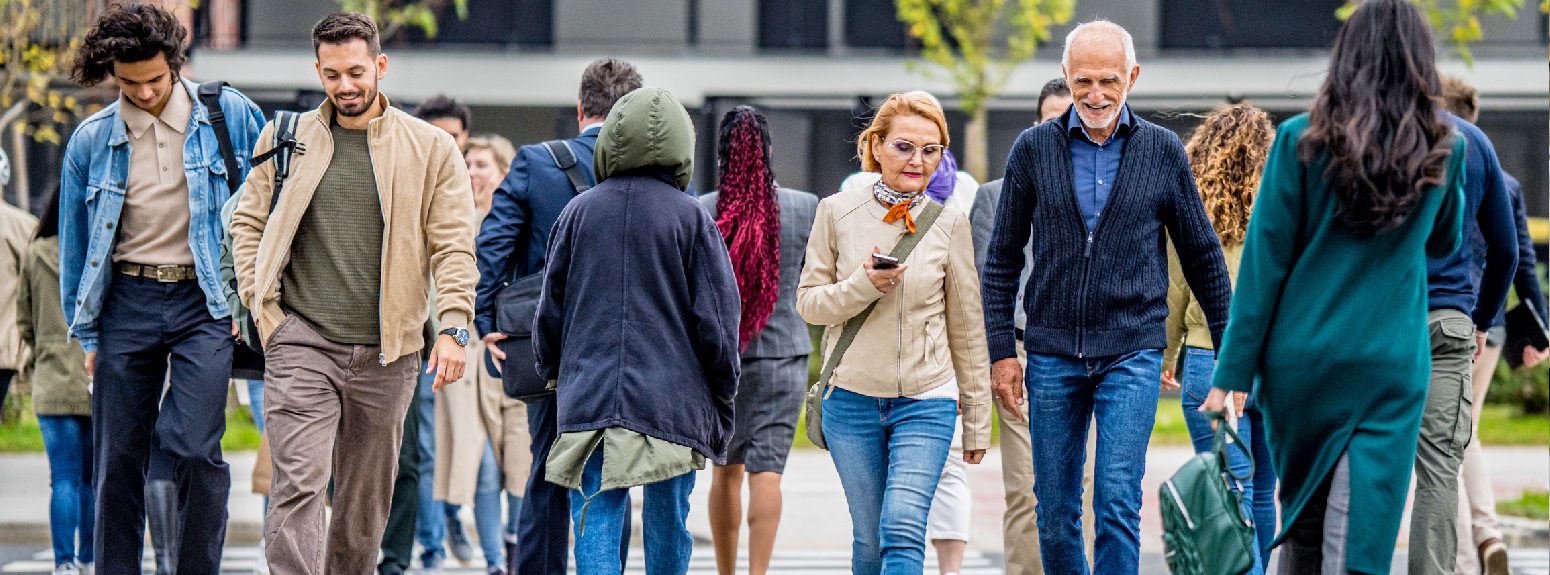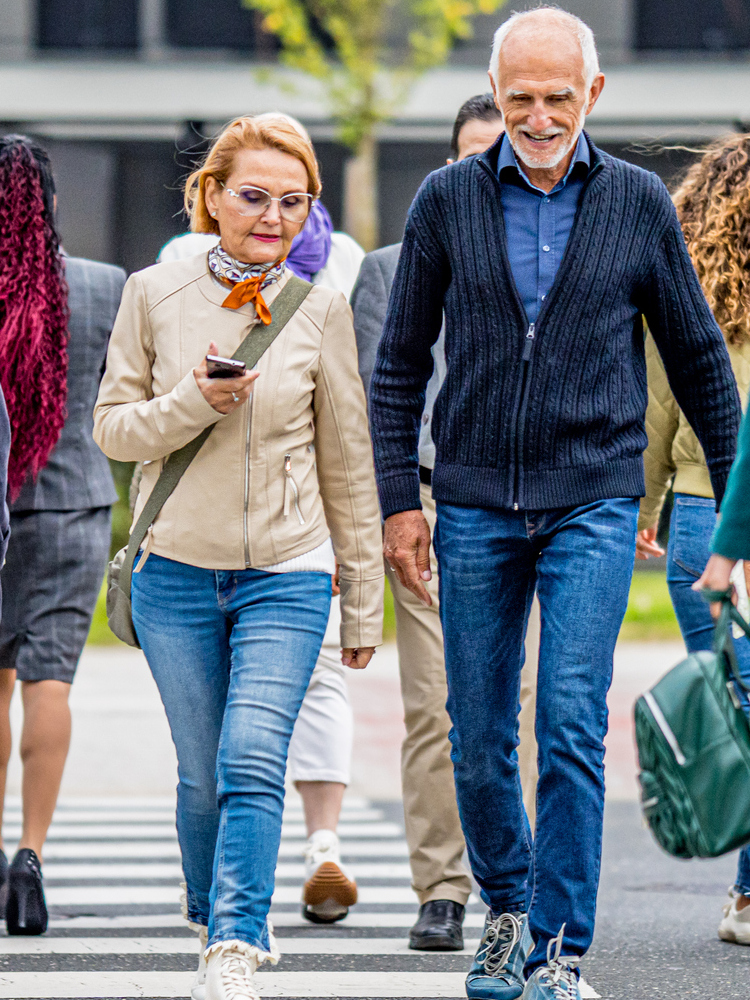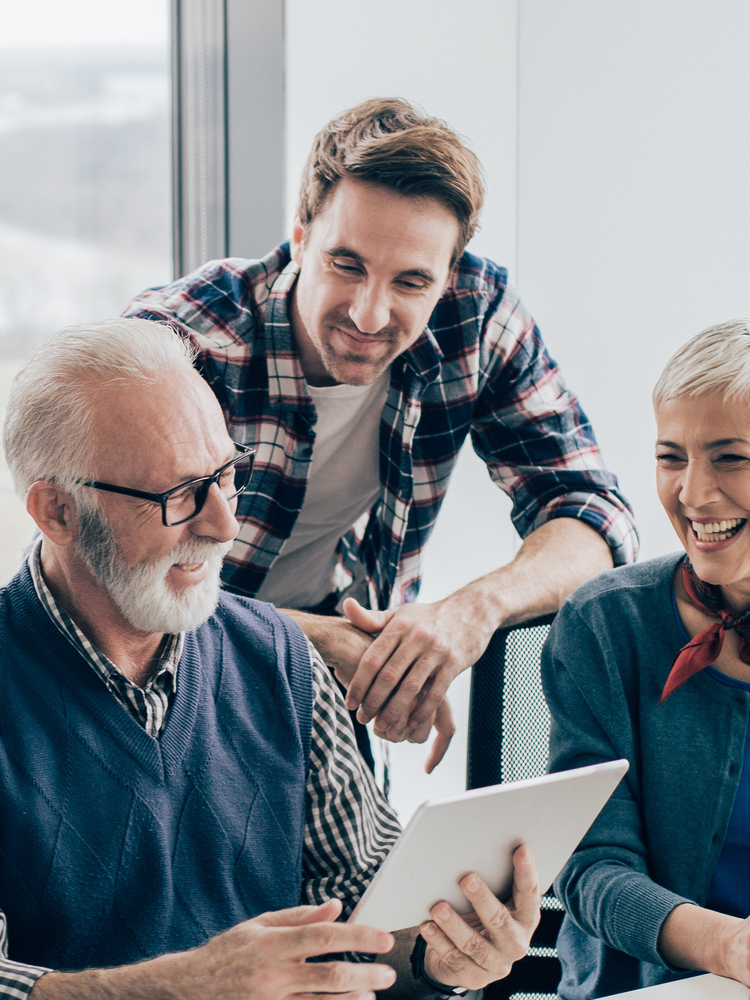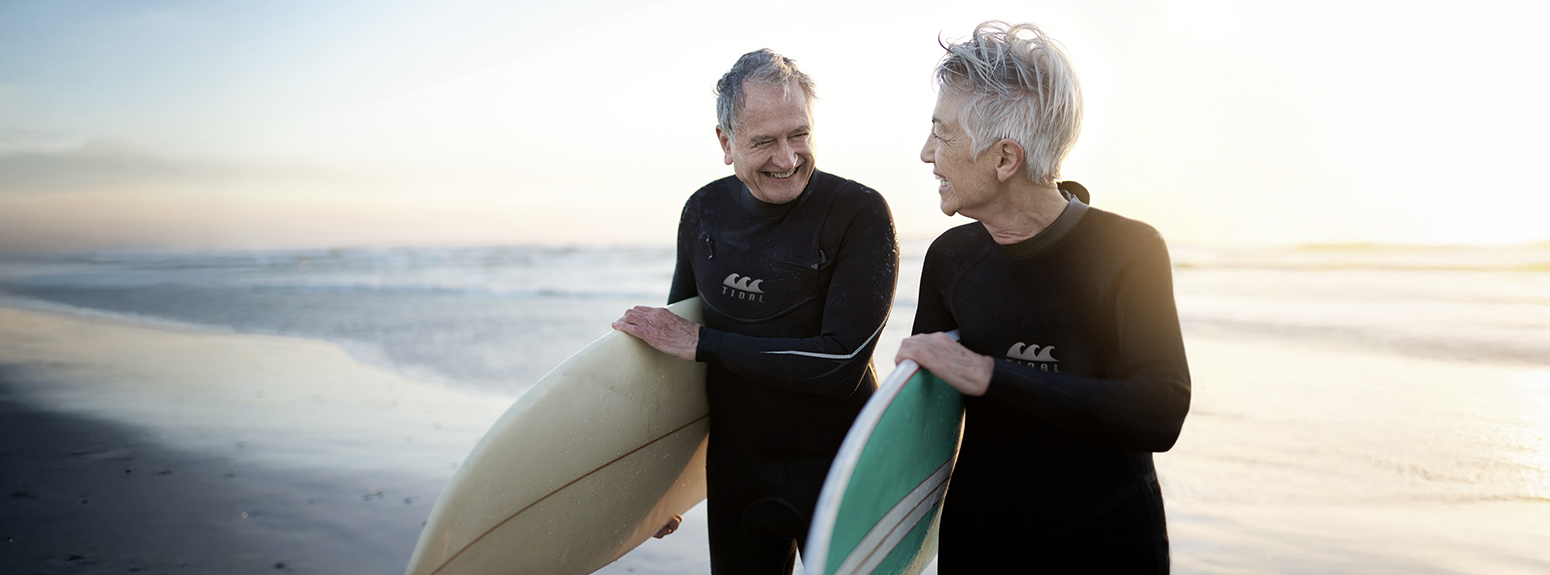Silver economy, the opportunities of a growing sector
With the ongoing socio-demographic changes, the economy revolving around products and services for the older segments of the population is already significant and is destined to become even more so in the future. In Italy, the phenomenon is even more pronounced, with technological innovation and startups playing a crucial role in the further development of the silver economy.
What is meant by Silver Economy: meaning and definition
The Silver Economy is the large economy that revolves around the needs, habits, and consumption of the older population. A constantly expanding market, also due to the demographic transformation that has been ongoing for some time, which will lead to one of the most significant social changes of the 21st century.
In fact, the UN estimates that by 2050, those over 65 will constitute 16% of the global population, compared to 9% in 2019. This figure will grow further in more developed economies, reaching 25% in Europe and North America, and even more in Italy, where, according to ISTAT forecasts, those over 60 will make up over a third of the population (between 32% and 37%).
In this scenario, the Silver Economy is defined as "the set of economic activities that respond to the needs of people aged 50 or older (the Silvers, due to their silver hair), including the products and services they directly use and the additional economic activity that this spending generates," as outlined by the European Commission in the 2018 report "The Silver Economy."h2
A vast segment of the population that, as they age, transitions from an active lifestyle to a "differently active" one, with new consumption habits to be intercepted. Moreover, the document states that if it were a sovereign state, the silver economy would be the third largest in the world, preceded only by the USA and China, with an estimated growth rate of 5%. A market with an expected value of 5.7 trillion euros by 2025, equivalent to a third of the European GDP.
Therefore, the Silver Economy is already significant and is destined to become increasingly in future, not only for governments, which must demonstrate their ability to sustain public spending for the maintenance of state welfare (particularly health and pensions), but also for professionals and businesses in the sector, who are called upon to intercept the new market demand from the Silvers to seize the numerous opportunities offered by the ongoing socio-demographic changes.


The socio-demographic aspects of the Silver Economy
The increase in the average age of the population, which is expected to reverse in the 22nd century, is one of the reasons for this social transformation, originating from various factors including:
- Ageing of the "baby boomers", the generation born between 1946 and 1964 when, after the second World War, the post-war recovery associated with technological development led to greater well-being, resulting in a spike in birth rates during this historical period.
- Birth rate, that is to say the number of births per woman, which has been steadily declining since 1964, reaching a European average of 1.5 in 2020, with significant differences between countries: France leading with 1.83, Italy third from last with 1.24.
- Longevity, as life expectancy continues to increase. In the Old Continent, for example, life expectancy has increased by about ten years over the past fifty years, and as noted by Eurostat, in the EU, life expectancy has risen from 77.6 years in 2002 to 81.3 in 2019.
However, living longer does not necessarily mean ageing in good physical and mental health, although the years spent without problems are increasing. In EU countries, women, on average, live without problems until 64.5 years (63.5 years for men).
Among those over 65, about half acquire a disability: a number that increases with ageing. In Italy, according to ISTAT data from 2021, the percentage of people in good health drops from 59.6% among those aged 60-64 to 47.3% among those over 65 (up to 74 years).
The Silver Economy in Italy: impacts and prospects
Another critical issue lies in the incidence of chronic diseases, affecting 51% of the Italian population aged 55-59 and three-quarters of those over 65. Many of these people face mobility problems; therefore, their quality of life is closely linked to inclusivity and accessibility in society, with public policies suited to the demographic transformation and the paradigm shift that the Silver Economy implies.
The General Accounting Office of the State estimates that there are 2.5 million non-self-sufficient people over 65 in Italy, 320,000 of whom live in nursing homes. In 2021, this impacted state spending by about 31 billion euros, or 1.9% of the Gross Domestic Product, and the incidence on public finances will reach 2% in 2040 and then 2.4% by 2050, following the demographic trend.
Therefore, stimulating the autonomy of the Silvers and simultaneously improving their quality of life is essential to ensure the sustainability of national welfare and, at the same time, represents a great business opportunity for companies and professionals in the Silver Economy.
Those over 50 are the largest holders of wealth, both in movable and immovable assets, and rely on certain income flows regardless of economic cycles. Moreover, the Italian Silver is "digitized" (95% in the 50-64 age group own a smartphone, a percentage that drops to 85% in the 65-74 age group and 65% among those over 75), lives alone at home, has time and economic resources to help their family members, has a "rich" social life, engages in physical activities, goes on vacation, and is increasingly involved in cultural activities.
A scenario that implies interesting prospects in the local market for Italian Silver Economy businesses and professionals, who, by adapting to the new consumption habits of the Silvers, can establish themselves and grow in the Silver Economy landscape, also thanks to the disruptive potential of innovation.
Opportunities and challenges: the future of the Silver Economy
More generally, due to the global demographic trend, the constant rise of the Silver Economy offers and will continue to offer numerous opportunities to sector businesses, but also implies several challenges to overcome.
Firstly, active ageing starts in the workplace, with the Silvers needing services and products that help them maintain concentration, engagement, and motivation. In this sense, companies can develop various solutions that promote active ageing, seizing the opportunities offered by longer professional careers.
In the real estate sector, there is also a growing demand for senior-friendly housing, and in this regard, companies can create residential projects that include home care services and meet the need to feel part of a community: a particularly felt need among older people. This includes voice assistants for Smart Homes, advanced sensors, and social robots.
The Silvers increasingly require assistive technologies such as mobility and safety solutions, with innovative companies called upon to intercept this change and seize its opportunities. Moreover, the growing demand for healthcare and home care services implies significant prospects for innovative companies, which, through solutions like telemedicine and health monitoring devices, can meet another need of the Silvers.
Another particularly interesting sector for the Silver Economy is leisure management, with the elderly increasingly interested in traveling - regardless of the season - engageing in sports, and participating in cultural events in innovative ways.
Moving on to the challenges, companies are called upon to develop a range of products and services that meet the needs of older people, but that are also sustainable so as not to deplete natural resources. Additionally, ensuring that services and products are accessible to everyone - regardless of age, physical and cognitive abilities - represents an obstacle to be faced and overcome.


Active Ageing: solutions for sustainable work integration
The increase in life expectancy has led major national and supranational institutions to introduce the concept of active ageing as a response to issues related to the quality of life of the Silvers. In this sense, active ageing is defined as the process of optimizing opportunities related to health, safety, and social participation for the older population.
A process that begins in the workplace, as the Silvers have longer professional careers and are digitally literate: circumstances that allow them to continue generating income by working before retiring at increasingly advanced ages (in 2019, those over 55 represented 20% of the workforce in the EU).
In this shift in the balance between private life and work, the concept of ageing at work is gradually taking hold, born to address the need to help older people maintain high productivity and based on four pillars:
- Active ageing: concerns optimizing opportunities to work in qualitatively good, healthy, and productive conditions until retirement age.
- Workplace well-being: focuses on studying the relationship between adverse working conditions and the psychophysiological response of the Silvers.
- Lifelong learning: the digital transformation requires workers of all ages to be constantly updated to maintain competitiveness and productivity through continuous learning paths, countering skill obsolescence.
- Diversity and anti-discrimination: manageing diversity and policies that address age-based discrimination in the workplace, such as negative judgments from younger colleagues towards the Silvers due to their different birth years: the so called age shaming.
Ageing in place: housing and technological solutions for lasting independence
In the context of the Silver Economy, the concept of housing is evolving: from a place dedicated exclusively to private life to a space that supports and sustains an independent and fulfilling life, even when full self-sufficiency is no longer possible.
In this scenario, Ageing in place - defined by the US Centers for Disease Control and Prevention (CDC) as the ability to live in one's home and community safely, independently, and comfortably – is emergeing. In this perspective, homes must be designed considering various factors such as accessibility and, for example, equipped with sensors to monitor the health of the Silvers and the domestic environment in which they live.
From a technological standpoint, this translates into the application of all available solutions to create a Smart Home suitable for the Silvers: broadband connections, advanced environmental sensors, autonomous devices, and advanced human-machine interfaces. The domestic infrastructure is thus integrated and complemented by wearable medical sensors, specific health IoMT (Internet of Medical Things) sensors, high-performance and minimally invasive wearable devices.
In the homes of the Silvers, voice assistants are essential, supporting daily activities by simplifying or automating them, and enabling interaction with natural language, also reminding users of things they need to do (e.g., taking medication, preparing meals, or appointments).
Moreover, advanced sensors and smart furniture are designed to improve the safety and comfort of the elderly. The former can monitor environmental and health parameters, while ergonomic and accessible furniture facilitates mobility and independence.
Another interesting element in perspective is Senior Housing: residential complexes that combine the independence of the elderly with a range of services aimed at supporting it. A crucial role is played by home automation, which enables remote monitoring, and by the use of services based on Artificial Intelligence.
Equally important are Social Robots, devices that combine robotics and AI to offer companionship and assistance to the Silvers. These robots can reduce the sense of loneliness among older people, while simultaneously improving users' cognitive abilities and emotions.


Smart Cities and sustainable mobility for the Silver Economy
The socio-demographic trends of the Silver Economy are also reflected in urban contexts. In fact, data from the World Health Organization indicate that 61% of those over 60 worldwide live in urban areas. A phenomenon that raises questions about the livability and accessibility of cities for people who require special attention. In this sense, cities must offer services, structures, and environments that compensate for the physical and social changes associated with ageing.
In this regard, in 2016, UN Member States committed to addressing the social, economic, and territorial implications of population ageing from the perspective of Smart Cities, leverageing the opportunities offered by digitalization and adopting integrated, sustainable, and people-centered approaches for housing, green and public spaces, and transportation.
A framework that, within the context of Smart Cities, has led to the emergence of the concept of Age-friendly Cities, based on three pillars: physical environment, social environment, and municipal services. Following this paradigm, cities must provide services, structures, and environments that promote active ageing and social participation of older people.
Another fundamental element is Smart City Planning, the urban planning of Smart Cities based on technology, which can promote inclusion, well-being, and active ageing. The use of data as a support tool in urban planning allows for the analysis of city dynamics and understanding the movements, needs, and habits of its inhabitants. The creation of digital twins of cities also allows for visualizing the urban environment as an organism that changes and evolves.
The ability to use transportation is a key factor in achieving active ageing. In addition to accessibility, central to the Silver Economy, Smart City transportation services must be sustainable, accessible, safe, secure, and environmentally friendly, thus emphasizing environmental sustainability as it contributes to the well-being of the Silvers.
Finally, the design of urban areas is essential to make them accessible, but sometimes it is not enough to completely overcome architectural or natural barriers. In this sense, collaborative digital solutions can help identify and effectively manage these issues.


Health and well-being in the Silver Economy: technologies for monitoring and care
The interaction between Artificial Intelligence, Machine Learning, the Internet of Things (IoT), and immersive technologies has laid the foundation for the implementation of increasingly flexible and personalized products and services, available at low cost, even for autonomous and individual use.
The ability to remotely control and manage an acute or chronic phase of an illness or convalescence falls within the vast field of telemedicine, which leverages ICT to enable remote interaction between patients and medical staff. A market destined to grow rapidly, from 50 billion dollars before the pandemic (2019) to 460 billion expected in 2030. The use of ICT technologies also improves the efficiency of healthcare services and reduces the economic impact on healthcare systems and families.
Remote health monitoring is already essential to ensure timely and continuous care for the Silvers, with wearable devices and advanced sensors that can detect vital parameters such as heart rate and blood oxygenation. The data can be sent to professionals and caregivers in real-time, allowing for timely interventions if anomalies are detected.
Wellness and fitness sensors also help the elderly lead an active and healthy lifestyle: devices capable of monitoring physical activity and sleep quality, which, integrated with apps and digital platforms, allow users to receive personalized advice and feedback to improve their health conditions.
Virtual Reality (VR) also presents revolutionary opportunities for rehabilitation, offering new possibilities for physical and cognitive recovery. From exercises for motor rehabilitation to cognitive therapies and pain management: these are the main applications of VR.
Mechatronic aids such as exoskeletons and robotic assistance devices are used by an increasing number of municipalities to support the mobility and independence of older people. Finally, functional and medical food is designed to provide specific health benefits, including improved digestion, immune system support, and chronic disease management: foods that can be enriched with essential nutrients, probiotics, and other types of healthy ingredients.


Leisure and well-being: recreational and tourism activities for the elderly
The quality of life of the elderly is influenced by how they spend their leisure time, and in this sense, sports, travel, cultural experiences, and other activities can make it an active and stimulating moment that improves social relationships, promotes independence, and a healthy lifestyle.
Traveling, exploring, and having new experiences are activities that fall within the concept of active ageing, with the Silvers seeking experiences that combine relaxation, culture, and adventure: tourist destinations, therefore, must meet these expectations to attract this growing market segment.
Moreover, various studies have shown that travel and tourism have a positive effect on the well-being of the elderly, both physically and mentally, representing a significant part of their leisure time. Consequently, tourist destinations are called upon to adapt to the specific needs of the Silvers, offering them a range of necessarily accessible and comfortable services.
Examples such as virtual museum visits, specially created virtual worlds, and virtual tourism demonstrate how technology often makes services and products more interactive, personalized, and, above all, easy to use. New technologies connected to online platforms, virtual reality, and Artificial Intelligence, moreover, are fully part of this process, enabling new types of experiences that, quite simply, could not have existed before.
Virtual Reality (VR) is also revolutionizing the entertainment sector, offering the elderly new opportunities for fun and socialization. VR applications can be used to propose immersive experiences, games, and other recreational activities that contribute to improving well-being and quality of life.
Moreover, sports and recreational activities are essential for the elderly, as they are necessary to have and maintain an active and, consequently, healthy lifestyle. The elderly can participate in a wide range of activities such as yoga, swimming, and walking, which, in addition to improving physical and mental health, provide opportunities for socialization.
In conclusion, tourist destinations, entertainment technologies, and sports activities must also be designed to meet the specific needs of this population segment, ensuring rewarding and inclusive experiences. g
The role of startups in the Silver Economy
Frontier technologies and startups play a crucial role in the innovation of the Silver Economy sector. For example, the Mappathon initiative by the Turin-based startup WeGlad involves ordinary citizens and companies in mapping all the architectural barriers in cities. In this perspective, the innovative company co-founded by Petru Capatina and Paolo Bottiglieri collaborated, together with Digitarca, on the pilot project "Beyond Barriers" by Intesa Sanpaolo Innovation Center: a social innovation initiative aimed at making cities more welcoming and accessible, starting from Turin.
Moreover, a US startup has developed a platform for manageing patient health plans in clinics and nursing homes, which analyzes the clinical status of each patient in real-time and its evolution over time thanks to AI. Finally, in tourism, an example comes from the Italian startup AccessiWay, which aims to make websites and online platforms accessible to all people with limitations.
